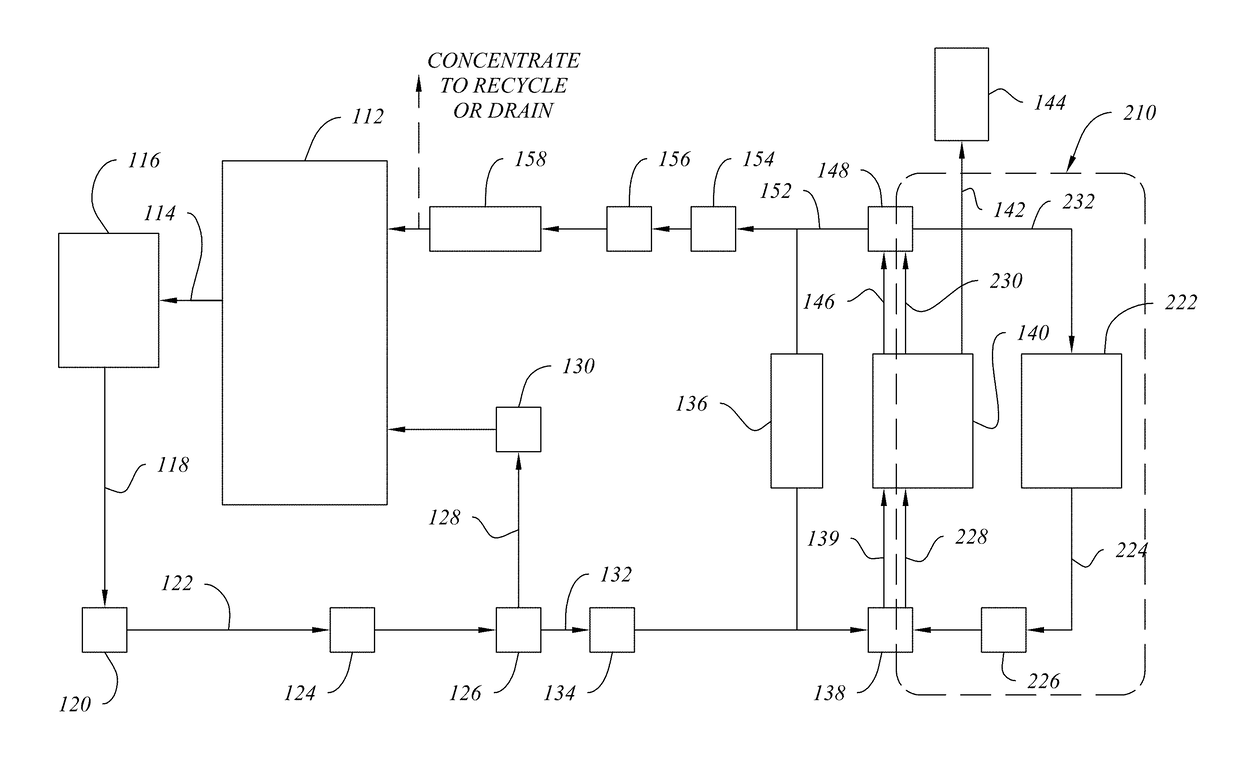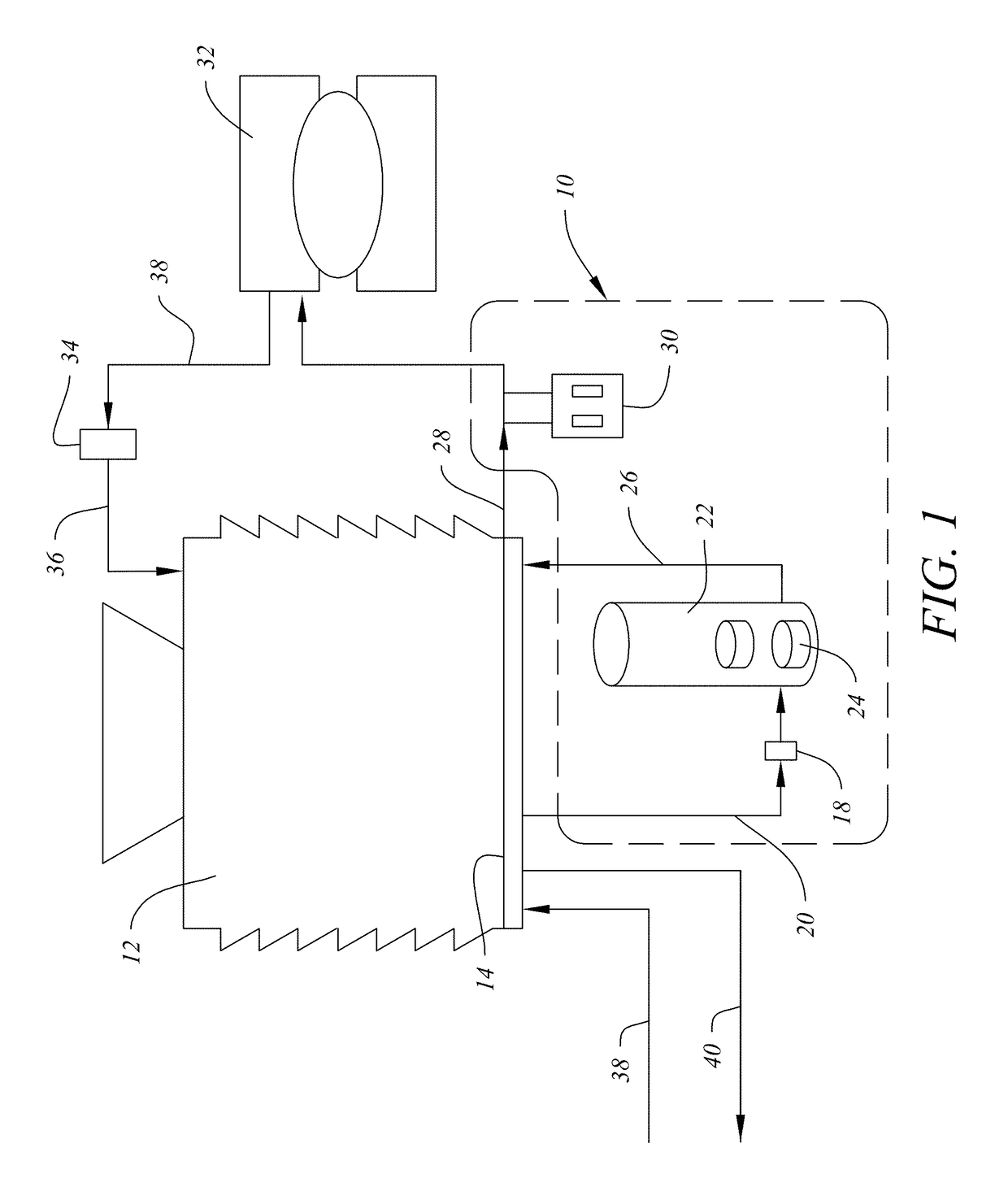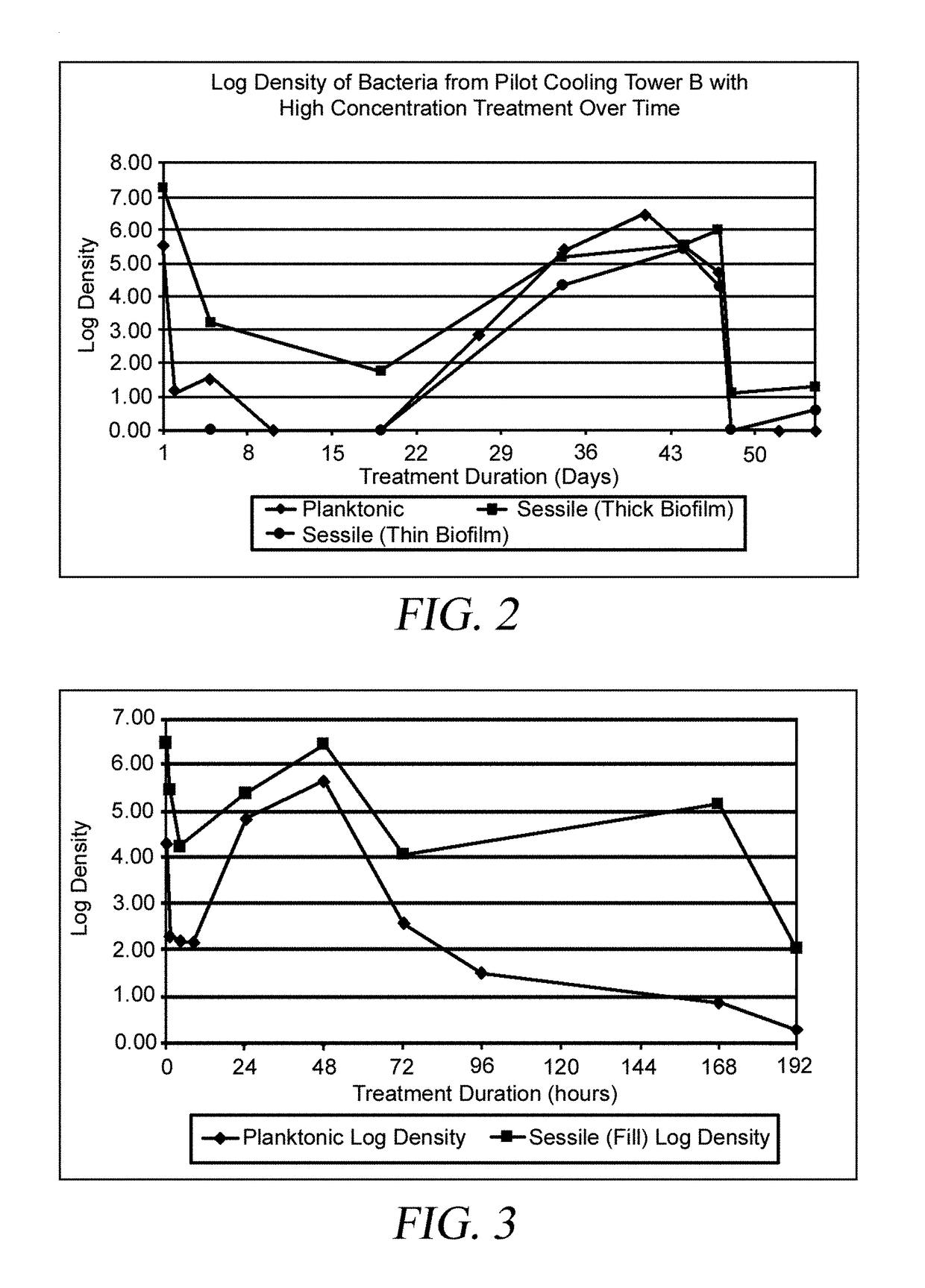Composition, system, and method for treating water systems
a technology of composition and water treatment, applied in the nature of treatment water, detergent compounding agents, cleaning using liquids, etc., can solve the problems of reducing the efficiency of treatment, reducing the cost of sewage treatment, and consuming around 700 billion gallons of water annually, so as to reduce the cost and risk, and reduce the effect of biofilm and scal
- Summary
- Abstract
- Description
- Claims
- Application Information
AI Technical Summary
Benefits of technology
Problems solved by technology
Method used
Image
Examples
example 1b
[0086] The process of Example 1 was repeated with the use of a commercial dispersant on the MB-2128 present in the same concentrations as Example 1A, but without the treatment composition of the present invention. When the treated solution and biofilm were processed it was found that there was only a 3 log reduction in the biofilm and supernatant were achieved.
[0087]The results of Examples 1, 1A, and 1B show that using the maximum strength concentration of the reagents was highly effective at removing biofilm and eliminating microorganisms in the solution and in the biofilm. The minimum concentration showed some efficacy at removing biofilm and reducing microorganisms when used alone; however; when the treatment composition was used with a secondary biocide there was a marked improvement in performance with no viable bacteria being recovered in the sessile or planktonic states. In addition the performance of the minimum concentration solution when used with the secondary biocide out...
example 3a
[0097] Treatment of the pilot cooling tower with the maximum concentration reagents in powdered form and a secondary biocide. At day 48, the cooling tower of Example 3 was treated again, this time with the maximum concentration reagents in powder form. This example demonstrates that there was no difference in performance between the power and liquid treatment compositions. As shown in FIG. 2, within three hours of the addition of the treatment composition in powdered form, both sessile and planktonic bacteria were reduced to levels below the detection limit and they remained at these low levels for over 1 week.
[0098]Corrosion evaluations on the maximum concentration for the treatment composition were performed on coupons in the corrosion rack in the cooling tower and in pot tests as previously described. The corrosion coupons in the coupon rack showed signs of corrosion after 24 hours. However, the galvanized steel coupons developed a waxy build up on the surface that increased in t...
example 5
[0110] Treatment of a 700 gallon cooling tower. Another experiment was conducted on a cooling tower that was considered to be a clean tower. A Marley 700 gallon cooling tower was identified and inspected for signs of visible contamination. It was noted that the water was clear, there was some brown deposits on the fill in the water, and there was a small amount of calcium carbonate scale on the outer surfaces of the fill. One week prior to starting the experiment, the conventional biocide treatment program was stopped. Microbial analysis of the water and brown deposit on the fill prior to starting the experiment showed counts of 1×104 cfu per ml and 1×104 cfu per cm, respectively, which are well within the specifications for this tower to be considered clean.
[0111]The treatment composition concentration was the same as that used in the previous experiments with the only change being the surfactant, which was switched to didecyldimethyl ammonium chloride. Prior to treatment a 17 ppm ...
PUM
| Property | Measurement | Unit |
|---|---|---|
| linear velocity | aaaaa | aaaaa |
| total volume | aaaaa | aaaaa |
| treatment time | aaaaa | aaaaa |
Abstract
Description
Claims
Application Information
 Login to View More
Login to View More - R&D
- Intellectual Property
- Life Sciences
- Materials
- Tech Scout
- Unparalleled Data Quality
- Higher Quality Content
- 60% Fewer Hallucinations
Browse by: Latest US Patents, China's latest patents, Technical Efficacy Thesaurus, Application Domain, Technology Topic, Popular Technical Reports.
© 2025 PatSnap. All rights reserved.Legal|Privacy policy|Modern Slavery Act Transparency Statement|Sitemap|About US| Contact US: help@patsnap.com



